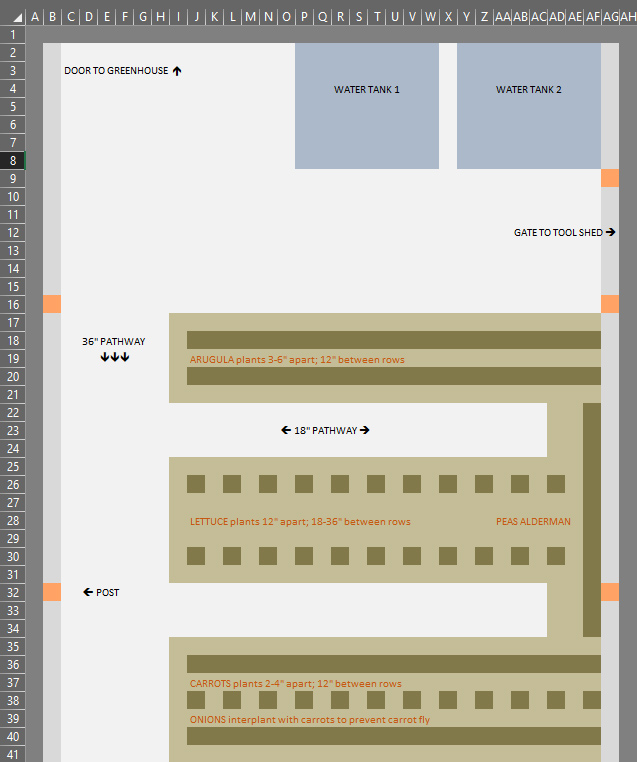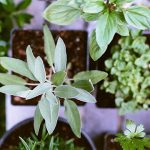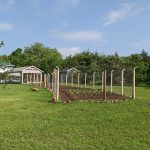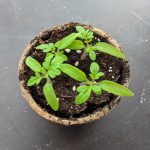Planning the layout of your vegetable garden is not rocket science, but there is a science to it. If you are simply planting a few container plants, or an 8ft by 8ft veggie plot, your layout options are limited. Decisions about where and what to plant will be much easier to make.
When you start getting adventurous with the size of your garden, the science becomes increasingly important. This year Justin and I are planting a vegetable garden that is 12’ wide by 96’ long, and we are growing about eighteen different kinds of vegetables. Growing a garden this size takes some planning if you want your crops to be healthy and your harvest to be successful.
If you are still in the planning stages of a new vegetable garden location and have not yet determined it’s size or improved the soil, you may want to reference our post THE HOLLAND HOUSCH | PLANNING FOR A NEW VEGETABLE GARDEN. This important step comes first.

RECORDING YOUR VEGETABLE GARDENING EXPERIENCES
Recording the Layout of your Vegetable Garden
There are many things to consider when designing a vegetable garden layout and one of the best things you can do is to keep records of the decisions you make, and the experiences you have, each year. For example, if this is not the first year you plan on growing vegetables you will need to consider crop rotation. Plants remove important nutrients from the soil and each plant will consume a unique blend of nutrients. Rotating your crops, while supplementing the soil, will help keep nutrients at optimum levels.
Choose a medium for recording your layouts and notes. There are many options—everything from graph paper, sketch paper, MS Word or Excel, journaling, to full online garden planning apps. Choose something you will enjoy working with. Gardening for many people is a hobby.
I chose to design my vegetable layout in an MS Excel spreadsheet. I enjoy planning and researching. Paying for an app does not have enough value for me. In Excel I can plot my garden rows and pathways with contrasting colours, add notes and labels, and for future garden layouts I can easily copy my data to a new spreadsheet and make changes.

PLOTTING OUT YOUR VEGETABLE GARDEN IN EXCEL
Plot your Garden to Scale
The first step in your record keeping is to plot your vegetable garden to scale. In my Excel document each square on the spreadsheet is equal to 6” in the garden. For example, my main garden path is 36” wide (6 squares) and secondary paths are 18” (3 squares). Plot as many of the garden features as you can, including part shade locations and fences.
Research Individual Plants
Your garden knowledge will grow, and your intuition will get sharper the more gardening experience you have. When you begin plotting your vegetables in your garden start by laying them out in the general area where you think they might work best. Do not overthink it. If you are using paper as your recording medium, you may wish to write the names of each vegetable on small pieces of paper so you can move them around your garden plot with ease.
Next, review your seed packets and make a note of important plant details (distance between rows, distance between plants, overall height of mature plants, light requirements etc.) Most vegetables will require full-sun but if you do have any part-sun locations in your garden, note the vegetables that will tolerate a bit of shade.

PLANNING YOUR VEGETABLES IN EXCEL
Choosing a Location for Each Plant
This is the part of designing your garden layout that requires some deeper consideration. Having researched each plant individually, see if the location you intuitively chose for your plant is still the best location. Do not get your shirt in a knot if you end up moving all the vegetables around a few times. Each year as your garden knowledge and experience grows you will get better at knowing where to locate your plants.
Consider the following:
- Is the plant in a location that meets its light requirements?
- How tall does the plant get when it is mature, and will it cast shadows on the plants beside it? A good rule of thumb: if the plant gets 24” tall, space the rows 24” apart. If the seed packet tells you how far apart to space the rows, defer to the seed packet info. Sometimes spacing is determined by how heavily the plants feed on soil nutrients.
- How wide does the plant get and what are the spacing requirements between rows? Plants that like to spread—squash and cucumber for example—can take over large areas of your garden.
- Is the plant a climber? Does it need a trellis or fence to support it, and how high does that support need to be?
- Will the plant produce vegetables that you will harvest frequently—lettuce for example—perhaps you might want to plant it near the start of the garden.
- Does the plant require frequent watering? How accessible is the garden hose and how far does it reach?
- Are there plants that grow well together; this is called companion planting. There is a lot of information online about companion planting. There is some evidence that certain plants do well when grown side by side, and others do not. It is worth a little digging to make sure you are not compromising the success of your plant.
- How much produce do you want to harvest from each vegetable? This will be dependent on how much space you have and how far the individual plants need to be spaced apart. Consider staggering plants instead of planting in straight rows if you need to make room for a few extra plants.
Collecting as much information as you can on each vegetable plant will allow you to position them in the best location with the best conditions.

THE VEGETABLE GARDEN MASTER PLAN FOR 2020
Adding Pathways to the Garden
Secondary pathways between vegetables should be 18”-24” wide to allow for ease of movement when watering, weeding, and harvesting. If plants are planted too close together you risk damaging them. Primary pathways should be 24”-36” especially when they need to accommodate a wheel barrel. Pathways can be made of materials like stone, gravel, mulch, or straw. Cover them with a landscape fabric to inhibit weed growth and then top the fabric with the pathway material.
Conclusion
Yes, there is a science to vegetable gardening but it is an art as well. Every garden in a unique environment with its own temperature variations, lighting, nutrient levels, pests, and challenges. Following general rules will ensure a good garden; but keeping records of your gardening experience, planting schedule, vegetable varieties, and layouts, will ensure a beautiful and successful garden.
If you are dreaming of having a vegetable garden or growing your own food, consider getting design assistance. Design for Conscious Living® can help you with the design, layout, and proper placement of your garden to ensure you have the foundation in place to grow your edibles successfully. Even if you live in the city, where urban gardening is becoming increasingly popular, we can help you make your plants and the plot where you grow them look aesthetically pleasing.







